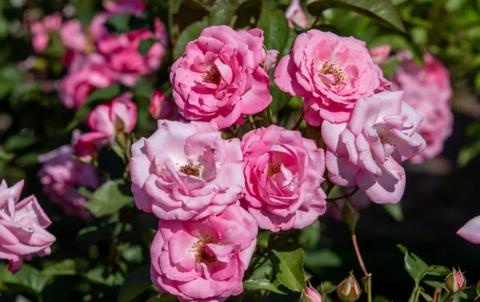Spring is a time of renewal and growth in the garden, but space can often be limited, especially for urban or small-scale gardeners. However, with the right strategies and techniques, you can make the most of every inch of available space and create a thriving oasis of greenery and productivity. In this article, we'll explore a variety of tips and tricks for maximizing space in your spring garden, from vertical gardening to companion planting, so you can enjoy a bountiful harvest and beautiful blooms all season long.The following content also has some reference value for raised garden beds.
Assessing Your Garden Space
Evaluating available space and sunlight exposure
Before you start planting, take a careful look at your garden space and assess how much sunlight each area receives throughout the day. Understanding your garden's sun patterns will help you determine the best placement for your plants and make the most of available light.
Identifying potential obstacles or limitations
Take note of any obstacles or limitations in your garden space, such as trees, structures, or uneven terrain. These factors can impact your garden layout and plant selection, so it's important to work around them creatively and efficiently.
Vertical Gardening Techniques
Utilizing trellises and arbors for climbing plants
Make use of vertical space by installing trellises or arbors for climbing plants like cucumbers, peas, and beans. These structures not only save ground space but also add visual interest and architectural appeal to your garden.

Installing vertical planters or hanging baskets
For herbs, flowers, or compact vegetables, consider using vertical planters or hanging baskets. These space-saving solutions allow you to grow a variety of plants in small areas, whether on a balcony, patio, or even indoors.
Intensive Planting Methods
Companion planting for space efficiency and pest control
Companion planting involves growing different plant species together to maximize space and enhance pest control. For example, planting marigolds alongside tomatoes can help repel pests and improve overall garden health.
Succession planting to maximize crop yield throughout the season
Succession planting involves planting new crops as soon as one harvest ends, ensuring a continuous supply of fresh produce throughout the growing season. This method maximizes yield and minimizes downtime in your garden beds.
Container Gardening Solutions
Choosing suitable containers for different types of plants
Select containers of varying sizes and materials to accommodate different types of plants, from herbs and vegetables to flowers and shrubs. Be sure to choose containers with adequate drainage to prevent waterlogged soil.
Arranging containers strategically to optimize space usage
Arrange containers strategically, grouping plants with similar light and water requirements together to maximize space and simplify maintenance. Vertical stacking or tiered arrangements can further optimize space usage in small garden areas.
Raised Bed Gardening Strategies
Constructing raised beds to increase planting area
Raised beds offer several advantages for maximizing space, including improved soil drainage and increased planting area. Build raised beds to your desired dimensions and fill them with nutrient-rich soil for optimal plant growth.

Incorporating square foot gardening techniques for precision spacing
Square foot gardening involves dividing raised beds into square foot sections and planting crops at precise spacings. This method maximizes planting density and simplifies crop rotation and maintenance, making it ideal for small gardens or urban spaces.
Utilizing Interplanting and Interrow Cropping
Mixing compatible plant species within the same bed or row
Interplanting involves mixing compatible plant species within the same bed or row to maximize space and improve soil health. For example, planting nitrogen-fixing legumes alongside heavy feeders like corn can help improve soil fertility and structure.
Maximizing soil coverage and nutrient uptake through intercropping
Intercropping involves growing two or more crops simultaneously in the same space, allowing for efficient use of resources and reduced competition for nutrients and sunlight. Pairing shallow-rooted crops with deep-rooted varieties can maximize soil coverage and nutrient uptake, leading to healthier plants and higher yields.
Incorporating Vertical Structures for Support and Shade
Building pergolas or archways for vine support and aesthetic appeal
Construct pergolas or archways in your garden to provide support for climbing plants like grapes, kiwis, or wisteria. These structures not only add visual interest but also create shaded areas for relaxation and entertainment.
Installing shade structures to protect delicate plants and extend growing seasons
Install shade structures like shade cloth or pergola covers to protect delicate plants from intense sunlight and heat. Position these structures strategically to create microclimates and extend the growing season for cool-season crops or heat-sensitive varieties.
Implementing Creative Pathway Designs
Using winding pathways to divide garden beds and create visual interest
Create winding pathways through your garden beds to define spaces and create visual interest. Use materials like gravel, stepping stones, or mulch to delineate pathways and incorporate curves or gentle turns for a natural, inviting flow.
Incorporating permeable materials for functional and eco-friendly pathways
Choose permeable materials like permeable pavers or gravel for garden pathways to promote water infiltration and reduce runoff. Permeable pathways not only prevent erosion but also enhance soil aeration and microbial activity, benefiting plant health and ecosystem resilience.
Implementing Season Extension Techniques
Installing cold frames or hoop houses for early spring and late fall crops
Extend the growing season for cold-sensitive crops by installing cold frames or hoop houses in your garden. These structures protect from frost and cold temperatures, allowing you to start seeds earlier in the spring and harvest later into the fall.
Using row covers and cloches to protect tender plants from frost
Use row covers or cloches to protect tender plants from frost and cold temperatures. These lightweight covers create a microclimate around your plants, trapping heat and preventing frost damage during chilly nights.
Utilizing Companion Planting Strategies
Pairing compatible plant species to maximize space and nutrient uptake
Pair compatible plant species together to maximize space and nutrient uptake in your garden. For example, planting nitrogen-fixing legumes alongside heavy feeders like tomatoes can improve soil fertility and reduce the need for synthetic fertilizers.

Incorporating beneficial insect-attracting plants to promote natural pest control
Incorporate insect-attracting plants like dill, fennel, or yarrow to attract beneficial insects to your garden. These insects help control pests like aphids, caterpillars, and mites, reducing the need for chemical pesticides and promoting a healthy, balanced ecosystem.
Conclusion
With thoughtful planning and strategic design, you can maximize space in your spring garden and enjoy a season of abundant harvests and beautiful blooms. Whether you're utilizing vertical gardening techniques, container gardening solutions, or companion planting strategies, there are countless ways to make the most of your garden space and create a thriving oasis of greenery and productivity. So roll up your sleeves, dig in the dirt, and let your garden flourish in all its springtime glory!









